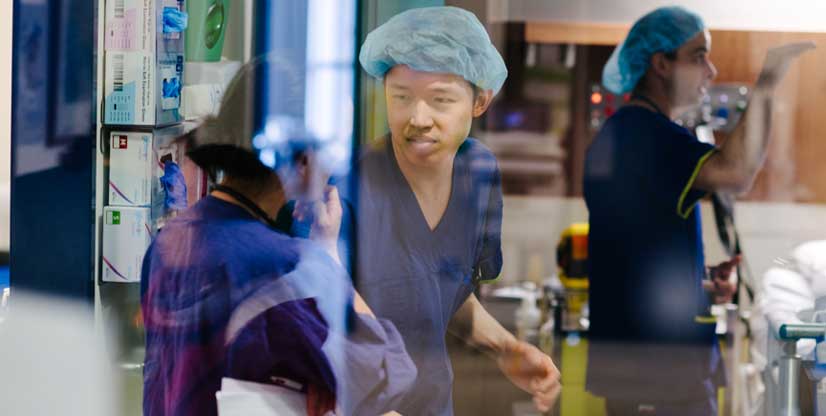About
Coming to hospital to lose your penicillin allergy
- Home
- About
- Latest news
- All news
- Archived news 2020
- Coming to hospital to lose your penicillin allergy
14 August 2020
An Australian-first study has found that 97% of people admitted to hospital with a low-risk allergy to penicillin were not actually allergic at all.
Austin Health’s Associate Professor Jason Trubiano said the study is the largest of its kind and looked at more than 1000 patients who reported a penicillin allergy when they were admitted to hospital.
“Antibiotic allergies are like allergies to food, people can grow out of them over time, or can even be misdiagnosed at a young age,” A/Prof Trubiano said.
“As part of this research, we assessed patients who were admitted as inpatients and identified as having a penicillin allergy.
“Among those tested were 200 patients with low risk penicillin allergies and 97% of those patients were actually able to take penicillin safely.
“This means these patients are now able to be treated with first-choice penicillin medication for serious infections which improves their health outcomes and reduces the need to use other medicines.
“These patients are now ten times more likely to be cared for using the preferred penicillin medication,” he said.
A/Prof Trubiano said the study took place thanks to a grant from the Victorian Government’s Better Care Victoria Innovation Fund.
“Up to 25% of hospital inpatients report an antibiotic allergy of some sort which can limit the type of medication used to treat them,” he said.
“Through this research we have been able to develop a cost-effective way for hospitals both in Australia and overseas to incorporate penicillin allergy testing safely into inpatient care.
“Ensuring the right antibiotics are used also significantly reduces the likelihood of antimicrobial resistance and ‘superbugs’.''
“There are also potential benefits for penicillin allergic patients who develop secondary pneumonia as a result of COVID-19, ensuring the right penicillin-based antibiotics can be used.
A research paper showcasing the study’s findings has just been published in the Infectious Disease Society of America’s Clinical Infectious Diseases journal - https://academic.oup.com/cid/article-abstract/doi/10.1093/cid/ciaa653/5879938?redirectedFrom=fulltext


